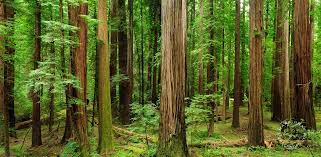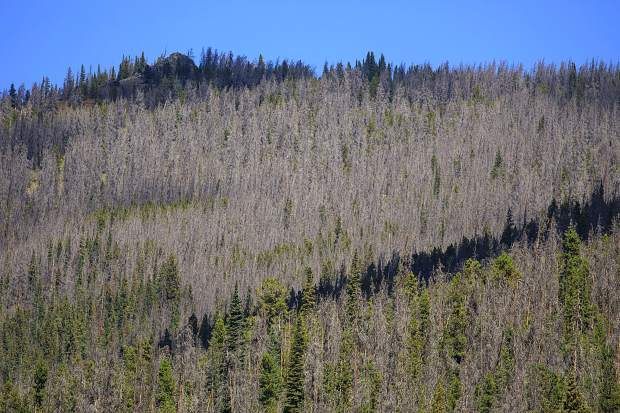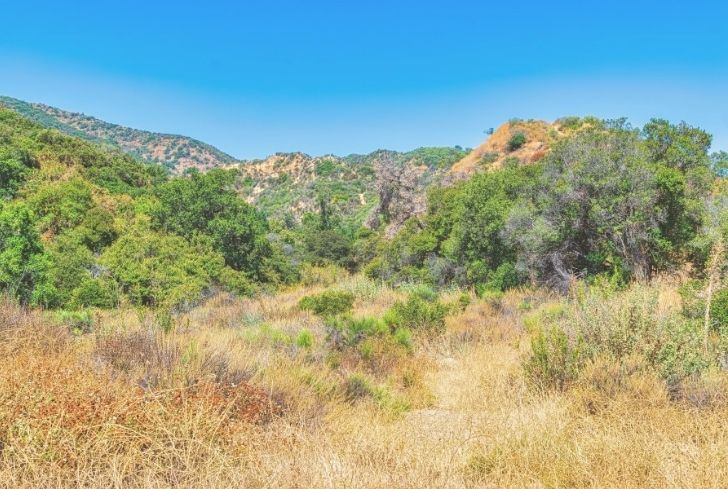Navigation
Install the app
How to install the app on iOS
Follow along with the video below to see how to install our site as a web app on your home screen.
Note: This feature may not be available in some browsers.
More options
You are using an out of date browser. It may not display this or other websites correctly.
You should upgrade or use an alternative browser.
You should upgrade or use an alternative browser.
CA To Spend $500+ Million To Clear Forests
- Thread starter tanner127
- Start date
Nameless Range
Well-known member
Such a difficult issue and any solution will be expensive.
I used to sit in on meetings where fuels mitigation was the subject. I didn’t then and still do not, know much about fuels reduction. A couple things that struck me though was that it can expensive in a per acre sense, and it is not something you do, walk away from, and then it is done. Meaningful fuels mitigation often means having a maintenance cycle. Don’t know if it is necessary everywhere but I doubt it is scalable.
In 2020, over 100,000 new homes were built in California, and I’d wager a fair amount of those were built in the famed WUI. Similar development is occurring all across the west. This is and will always be the chief problem.
I used to sit in on meetings where fuels mitigation was the subject. I didn’t then and still do not, know much about fuels reduction. A couple things that struck me though was that it can expensive in a per acre sense, and it is not something you do, walk away from, and then it is done. Meaningful fuels mitigation often means having a maintenance cycle. Don’t know if it is necessary everywhere but I doubt it is scalable.
In 2020, over 100,000 new homes were built in California, and I’d wager a fair amount of those were built in the famed WUI. Similar development is occurring all across the west. This is and will always be the chief problem.
OntarioHunter
Well-known member
- Joined
- Sep 11, 2020
- Messages
- 5,998
I worked for Yosemite ten years ago. The drive from Mariposa to Oakhurst was downright shocking. All those houses tucked in the trees with ladder fuels right up against the siding and hanging on the roof. I saw a documentary about the fire than ran through that area in the sixties. People tried to outrun it on the highway and the fire blew by their cars like they were standing still. A fire lookout timed it and speed was nearly a hundred miles an hour. Folks were burned up sitting on bar stools at a roadhouse. Fire hit so fast they couldn't get up let alone get out. Back then there were less than 2,000 homes in that area. Ten years ago there was 22,000 homes and I'm sure many more today. The point of the documentary was to scream about accumulation of ladder fuels but who's going to build a home that's not in the shade in that furnace? Insurance companies should just stop providing coverage in those areas. No insurance = no mortgages = end of problem. What's really disgusting is when all those fool's homes burn up the state applies for disaster aid and the federal taxpayers bail out the insurance companies.
And let's not point the finger at just California. How many times has Patty Canyon outside Missoula burned? But they still keep building homes in that wildfire corral.
And let's not point the finger at just California. How many times has Patty Canyon outside Missoula burned? But they still keep building homes in that wildfire corral.
D
Deleted member 28227
Guest
The entire state of Florida + Louisiana... Mississippi.Insurance companies should just stop providing coverage in those areas. No insurance = no mortgages = end of problem.
Texas...
oh crap, floods; Iowa, KS, Missouri...Nebraska who else... hmmmm
Islander
Well-known member
Are you for it or against? Figure for.
Sad to see what has happened to the Adirondacks in my lifetime. It is written into constitution that preserved forever and letting it just grow "naturally". Well now you have hardly any game because everything is even more mature than it was 40 years ago. Can't even cut a couple of trees to make a snowmobile trail. Tough to balance preservation vs use. Glad to see some good managment.
"Managed Naturally" turns out to be periodic burning by Native Americans. Idiot lawmakers aren't smart enough to even consider this.
diamond hitch
Well-known member
Through wildlife management classes I remember that the prefered habitat was comprized of a mozaic of parks and timber. Wildlife flourish along boundaries. Massive clearcuts or timber jungles don't seem to be favorable for wildlife and mozaics of habitat appear too complicated for planners.
Fully natural planning leads to catastrophic ends taking ecosystems back to the brush stage for decades to centuries. There are miles of hillsides that have yet to grow a tree or much of anything since the 1910 fire on the Idaho-Montana border. I'm not much on the "too much to nothing" management style. I know some areas out of Butte that there is a few centuries of dead lodgepoles stacked up 10 ft high. It has never burned and not even squirrels live there.
We can fight over natural vs managed forever but I guess I have seen to much to believe the natural is better bs. I just wish some of the middle ground could be explored for a change. At least experimentally in a number of ecosystems.
Fully natural planning leads to catastrophic ends taking ecosystems back to the brush stage for decades to centuries. There are miles of hillsides that have yet to grow a tree or much of anything since the 1910 fire on the Idaho-Montana border. I'm not much on the "too much to nothing" management style. I know some areas out of Butte that there is a few centuries of dead lodgepoles stacked up 10 ft high. It has never burned and not even squirrels live there.
We can fight over natural vs managed forever but I guess I have seen to much to believe the natural is better bs. I just wish some of the middle ground could be explored for a change. At least experimentally in a number of ecosystems.
OntarioHunter
Well-known member
- Joined
- Sep 11, 2020
- Messages
- 5,998
Top = easy management. On the flat and very little ladder fuels. Relatively difficult for a fire to crown out and sustain itself. This forest has great potential to become mature or even old growth. It undoubtedly has a very low frequency fire history.So in this thread alone we are talking about;
View attachment 188061
View attachment 188063
View attachment 188064
I imagine there are some major differences in management, commercial value, etc between these forest types.
Middle = disaster management. Appears to be a bug infestation, either boreal forest spruce budworm or pine bark beetle (hard to tell from the photo). These are naturally occurring phenomenon typically accompanied by large burn off. However global warming has significantly changed the natural cycle, especially in the far north where warmer winters have decreased mortality of larvae. Up there spruce trees simply cannot reproduce fast enough to offset the damage caused by exponential increase in pests. Letting it burn really isn't going to help things. In that harsh climate it can take hundreds of years for a marginal height spruce forest to restore itself. Similarly, letting bug kill lodgepole burn just produces another doghair lodgepole forest that crowds out any other species (hundred years of cones accumulated and stored on forest floor suddenly release their compressed seeds during the heat of a fire).
Bottom photo = potential for easy fire management. This place undoubtedly has a very high frequency fire history. Obviously very dry and nothing but ladder fuels ... with no crowns to climb into = low intensity fires. What makes this situation difficult to manage is the high probability for rural development. Good for little else since there's no marketable timber. Also clear visibility for scenic views makes it popular for home construction. This country should burn over every fifteen years but domiciles built there = fire suppression and unnatural accumulation of fuels. When a fire finally does take hold, it will be a whopper. Looks like much of California.
rammac
Member
I live in SW Montana and they finally opened wood harvesting here. Our forests are decimated by the Pine Bark Beatles, 80% of the trees are dead in my area. I own 20 acres of land and I've managed my property by removing all of the dead falls (which are perfectly fine for home heating in my wood stove ) and any standing dead trees. This is my seventh year working this property and even during this heat wave I have green forbs and grass along with more deer, elk, fox, moose, etc. than I've seen in any previous year. The commercial operations have removed so much dead wood that I'm sure that most feel that they are clear cutting but the benefit is lower fire hazard, less fuel, more plant variety, more animals, and larger underground aquifers. What's more, the local communities benefit from higher employment across the board. Personally I think that anybody that doesn't see the benefit of managing the forests with logging and controlled burns has never lived in a forest or is a modern "expert" that has bought in to the idiocy of the new "natural" movement. Academics may be educated but most have no wisdom, they might know data but they have no clue how to apply it.
Gerald Martin
Well-known member
- Joined
- Jul 3, 2009
- Messages
- 8,981
It is scientifically proven that wildfires are eliminated in a locality just as soon as the first tree in a timber sale is cut. Just ask Jennifer Fielder.
President Ammon Bundy will ban lightning without rain across the West and save us all from wildfires in the first year of his administration. He’ll team up with Ted Cruz to end hurricanes on the Texas coast after that.
To paraphrase that classic movie Field of Dreams. “ If you build it in the trees it can burn.”
President Ammon Bundy will ban lightning without rain across the West and save us all from wildfires in the first year of his administration. He’ll team up with Ted Cruz to end hurricanes on the Texas coast after that.
To paraphrase that classic movie Field of Dreams. “ If you build it in the trees it can burn.”
El Jason
Well-known member
Pretty broad statement.Academics may be educated but most have no wisdom, they might know data but they have no clue how to apply it.
OntarioHunter
Well-known member
- Joined
- Sep 11, 2020
- Messages
- 5,998
The USFS has been doing controlled burns for as long as I've worked for the govt = 1971. But making a controlled burn is easier said than done. It requires very precise conditions of geography and weather ... and managing public opinion. It's a magic act."Managed Naturally" turns out to be periodic burning by Native Americans. Idiot lawmakers aren't smart enough to even consider this.
The biggest problem in California is private landowners reluctance to burn ladder fuels. How can they without burning down their homes, fences, etc.?
OntarioHunter
Well-known member
- Joined
- Sep 11, 2020
- Messages
- 5,998
Removing a forest and the shade it provides pretty much offsets the water the trees consume (especially lodgepole and bull pine which thrive in dry environments). Instant evaporation of rainfall after hitting the ground is not going to contribute anything to the aquifer. The classic case is the biblical cedars of Lebanon. Once a lush forest the place is now essentially a desert because the trees were removed and when they disappeared so did underground moisture.I live in SW Montana and they finally opened wood harvesting here. Our forests are decimated by the Pine Bark Beatles, 80% of the trees are dead in my area. I own 20 acres of land and I've managed my property by removing all of the dead falls (which are perfectly fine for home heating in my wood stove ) and any standing dead trees. This is my seventh year working this property and even during this heat wave I have green forbs and grass along with more deer, elk, fox, moose, etc. than I've seen in any previous year. The commercial operations have removed so much dead wood that I'm sure that most feel that they are clear cutting but the benefit is lower fire hazard, less fuel, more plant variety, more animals, and larger underground aquifers. What's more, the local communities benefit from higher employment across the board. Personally I think that anybody that doesn't see the benefit of managing the forests with logging and controlled burns has never lived in a forest or is a modern "expert" that has bought in to the idiocy of the new "natural" movement. Academics may be educated but most have no wisdom, they might know data but they have no clue how to apply it.
This reminds me of a public meeting I attended up here several years ago when a young forestry grad was throwing up statistics and graphs to show that a new growth forest after a clear cut produce more oxygen than the old growth cut down, thereby helping combat climate change. I pointed out the problem is global WARMING. "Ever stepped out of an old growth forest into an adjacent clear cut? The temperature change can be instantly dramatic ... at any time of year. So how does making more oxygen make less heat on the earth's surface if there's exponentially less shade ... especially in clear cuts the size of the province of Prince Edward Island?" The kid just gave me a vacant look and went on to the next question.
Last edited:
OntarioHunter
Well-known member
- Joined
- Sep 11, 2020
- Messages
- 5,998
Gerald, you didn't quite get that right: "If you build it in the trees it WILL burn."To paraphrase that classic movie Field of Dreams. “ If you build it in the trees it can burn.”
Similar threads
- Replies
- 5
- Views
- 2K
- Replies
- 35
- Views
- 7K
- Replies
- 26
- Views
- 5K
- Replies
- 2
- Views
- 2K
- Replies
- 22
- Views
- 2K







